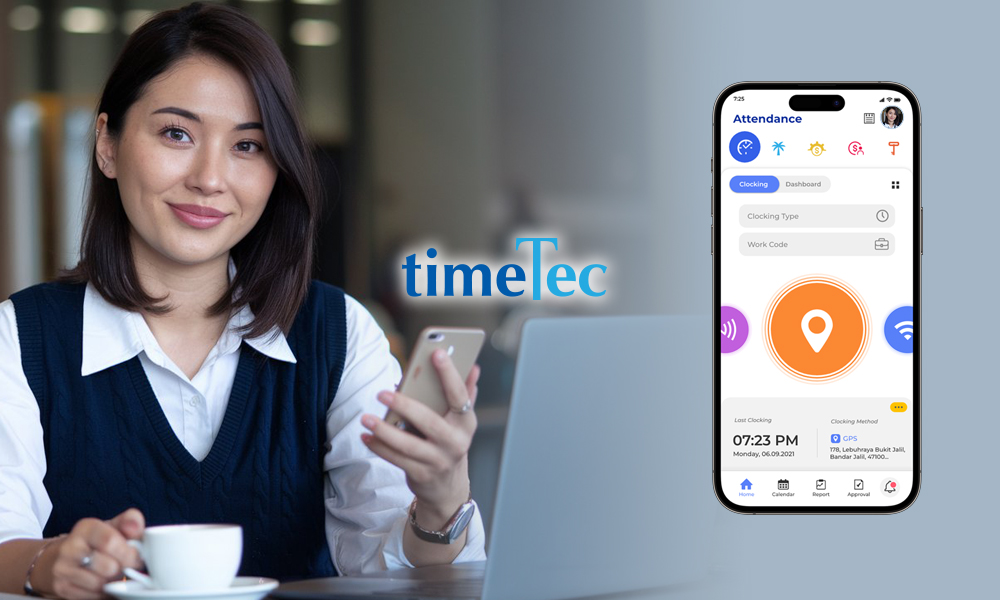For anyone who has worked before, it’s common knowledge that tracking employee time and attendance is essential for businesses of all sizes.
From traditional punch cards to outdated manual logs and now to modern digital solutions, the methods of recording work hours have evolved significantly. Regardless of the approach, clocking in and out remains a fundamental routine for employees. To ensure accuracy, efficiency, and compliance, every company needs a reliable time and attendance system that fits its workforce needs.
Table of Contents
- What Is Time Attendance?
- Why Is an Employee Time Attendance System Essential in This Modern Era?
- The Evolution of Time Attendance Systems
- Signs That Your Attendance System Is Not Effective
- Hidden Costs of Outdated Employee Time Attendance Systems
- Benefits of a Modern Time Attendance System
- Comparing Old Systems With New Technology
- What Can You Expect From a Modern Time Attendance System?
- How Do I Choose the Attendance System That Suits Me Best?
- Is It Time for an Upgrade?
What is Time Attendance?
Time attendance refers to the process of tracking or recording when an employee starts working (clock in), ends work (clock out) and takes breaks during their working period.
A time attendance system is an established method or system designed specifically to track employee attendance and working hours.
Why is an Employee Time Attendance System Essential in This Modern Era?
While employees are always clocking in and out, have you ever wondered why having a functional time attendance is vital in today’s workplace?
A question you might be wondering:
Reputable and successful companies often give employees the freedom or flexibility to work. So why do we, as normal companies, have to track and monitor our employees’ attendance recordings?
Here’s why:
These companies choose their companies based on strict and highly selective hiring processes. This ensures their workforce is highly motivated and reliable. However, in recent years, they have also faced challenges when it comes to managing their employees. This highlights that flexibility alone doesn’t guarantee smooth operations or accountability.
For most businesses, especially start-ups and growing companies, tracking employee working hours is essential for the success of the business. It helps ensure productivity, maintain accountability, and drive business success.
Implementing a robust time attendance system doesn’t mean micromanaging but rather creating a clear structure that keeps both the company and its employees on track.
The Evolution of Time Attendance Systems
Time attendance systems have evolved greatly over the years.
Businesses have moved from basic punch cards to advanced mobile apps, transforming how they track and manage employee attendance.
Today, companies generally fall into 3 categories of employee attendance systems:
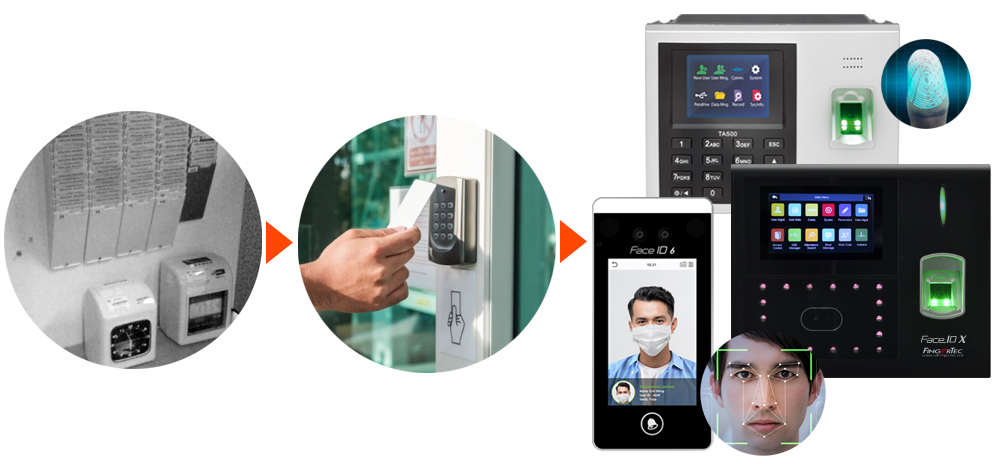
1. Punch Cards
Factories, restaurants or smaller businesses often rely on physical punch cards. In these industries, employees clock in their working hours by stamping their cards. While simple, these employee time attendance systems often are prone to fraud and errors.
2. Access Card Systems
Many companies use access cards that act as security keys and employee attendance trackers. While these methods are safer, these systems can still be inefficient and vulnerable to buddy-punching.
3. Advanced Biometric Systems
Modern organizations are adopting fingerprint or facial recognition devices for their time attendance systems. These eliminate the need for physical cards and are much more secure as they use employees’ unique biometric features to clock in.
In recent years, more companies are now adopting smartphone-based clock-in apps, making it the new norm for modern workplaces. This offers their workforce a flexible clock-in for remote and hybrid employees.
While each time attendance tracking methods have their pros and cons, facial recognition combined with the smartphone app stands out. This combination might be the most effective and practical method of recording and tracking employee attendance.
Signs That Your Attendance System Is Not Effective
We’re often comfortable sticking with systems we’ve used for years. “If it isn’t broken, why fix it?” Yes, your HR system might only seem functional on the surface. However, you have to ask yourself if it truly delivers the efficiency your business needs.
Here are some signs that indicate your time attendance system is outdated.
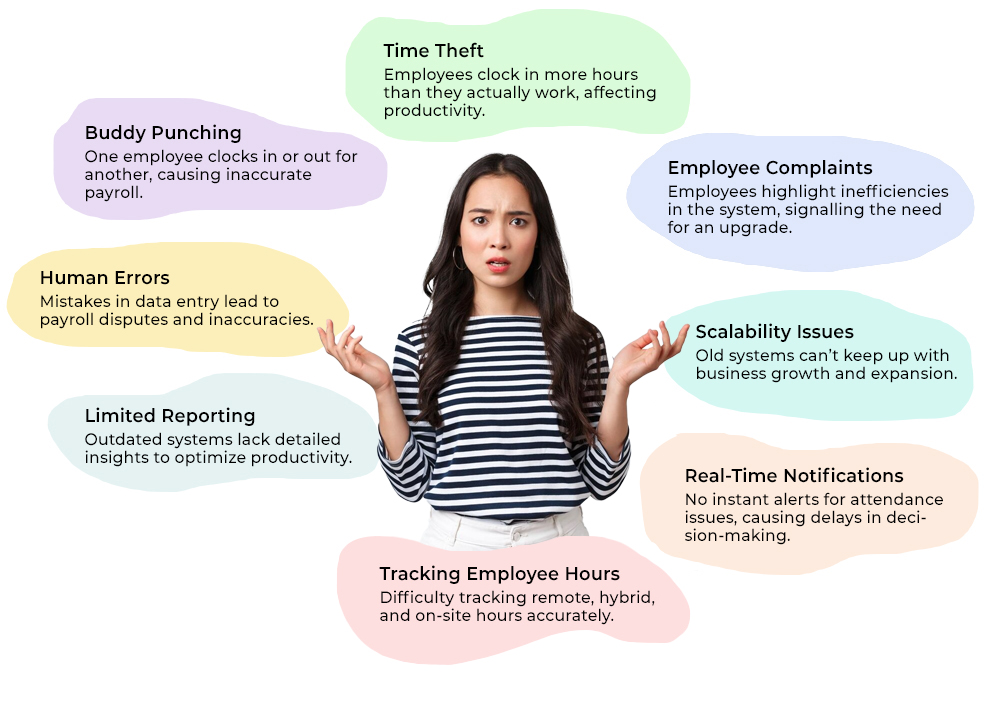
Time Theft
Have you noticed your workforce clocking in their hours more than they have worked? This is referred to as “time theft.” It happens when employees take long breaks, leave early, or falsify timesheets, whether intentionally or not.
Outdated time attendance systems can’t prevent this. Employees can exploit the system, taking long breaks unnoticed. Over time, this collectively reduces productivity and costs your business money.
Buddy Punching
Buddy Punching is considered when one employee clocks in or out for another employee. This phenomenon mostly happens regularly to companies that adopt traditional employee time attendance systems or access card-based systems. Without the use of biometric or real-time monitoring of employee time, businesses lose time off their workforce’s actual working hours, leading to inaccurate payroll and even reduced accountability.
Human Errors
Speaking about accountability, traditional time attendance systems are highly prone to errors, affecting accountability. These errors range from incorrect data entry to miscalculated overtime hours. Even small mistakes can lead to payroll disputes, employee dissatisfaction, and compliance issues.
Human errors also occur when transferring attendance data manually to payroll systems. Automated time attendance systems solve these problems by eliminating manual processes and reducing risks.
Problems Tracking Employee Work Hours
Working hours get challenging to track especially for companies that need to send their employees to different sites or to service clients. On top of that, after Covid, we’ve introduced even more different working methods such as working from home or even hybrid working setups.
A traditional employee attendance system might not have what it takes to deal with the current work environment. Here’s the thing, companies need features such as GPS tracking, geofencing or even mobile clock-ins which traditional attendance systems fail to provide. This leaves managers or CEOs with incomplete or inconsistent data, which might provoke distrust between the managers and their teams.
Limited Reporting and Analytics Capabilities
If your attendance tracking system only provides basic attendance data, it might be time to consider an upgrade.
While it might be enough small companies to have basic attendance data, for companies that need more valuable insight might have a hard time. Without detailed reporting and analytics, businesses might miss opportunities to identify problems. This hinders companies from improving productivity, optimizing schedules, and reducing absenteeism.
Safe to say with an advanced system, you can generate custom reports, track trends and forecast needs based on your company’s requirements.
Lack of Real-Time Notifications
Modern employee time attendance systems provide instant notifications about irregularities, such as late clock-ins or even absences. This is especially useful for companies that operate in a fast-paced environment or based on shift hours. Without real-time notifications, it will be an obstacle that delays you from making spontaneous decisions and makes managing a workforce less agile.
Lack of Scalability
If you’re using an outdated system, you might have doubts that it might not scale as your company grows. Say for the next 5 years, you plan to expand your business to a different location or even overseas, you would want your attendance system to be able to track your employee time attendance regardless of scale.
If you’re feeling that your current system might not be able to handle more employee time attendance, perhaps it’s time for an upgrade.
Complaints from Employees
Finally, if there are any inefficiencies in your system, employees are often the first to notice. Start paying attention to complaints about cumbersome processes, inaccurate working hours records or even delays in solving attendance disputes made by employees. This might indicate that you will need a modern time attendance system. There’s no doubt that a user-friendly and reliable system can improve employee morale and engagement.
Hidden Costs of Outdated Employee Time Attendance Systems
With all that above, you might have noticed something in common.
Yes, outdated systems have hidden costs. These costs can be the time wasted on manual data entry, errors that might lead to compliance penalties or even the requirement for more employees to manage inefficiencies.
Besides the financial expenses, hidden costs can come in different methods. It can also be in the form of decreased employee morale, productivity and your company reputation.
Investing in an employee time attendance system might seem like a big and costly step, but it’s actually a way to save costs in the long term and in return bring in long-term success.
Benefits of a Modern Time Attendance System
Modern time attendance systems have changed how companies track their workforce or employee time attendance. These sophisticated time attendance systems offer multiple ways for employees to clock in, making attendance tracking more efficient and reliable.

Mobile check-in methods, such as smartphone apps, have added flexibility to attendance tracking. Employees can clock in remotely, whether they are working from home, in the field, or at client sites. This ensures that attendance is accurately recorded regardless of location. In addition to clocking in, employees can also submit time-off requests and access their schedules directly from their smartphones.
Additionally, biometric devices such as facial recognition or fingerprint scanners have made time attendance tracking more secure and accurate. These systems eliminate the need for physical cards and are much more efficient in recording working hours. By using employees’ unique biometric features, these devices prevent fraud and errors, making them a preferred choice for many organizations.
How Do Biometric Attendance Systems Work?
To put it into simple terms, it uses every employee’s unique physical characteristics to identify them. This eliminates the possibility of buddy punching and time theft among employees.
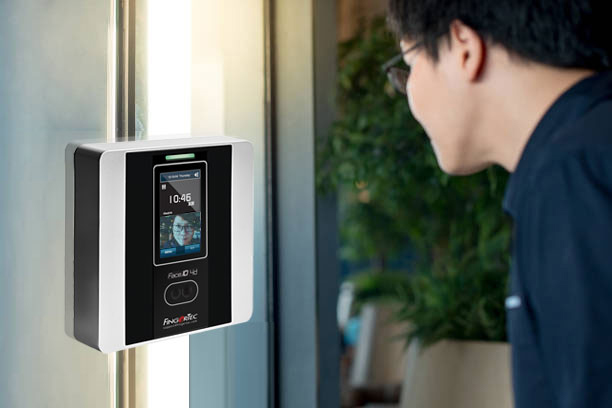
A facial recognition attendance system uses advanced algorithms to analyze the user’s facial features to verify employee identity in seconds. On the other hand, a thumbprint or fingerprint attendance system utilizes the user’s unique fingerprint patterns for authentication.
Smartphone Apps for Attendance Tracking
Smartphone apps have added another dimension to attendance tracking, allowing team members to clock in remotely or on the go. This flexibility is particularly valuable for organizations with field workers or remote employees. Through these apps, employees can easily record their attendance, submit time-off requests, and view their schedules, all from their smartphones.
Additionally, managers can access real-time attendance reports, enabling them to make informed decisions about workforce deployment and identify attendance patterns or issues promptly.

Real-time Insights and Payroll Integration
The benefits of implementing a modern attendance system extend beyond basic time tracking. These systems integrate seamlessly with payroll systems, reducing administrative burden and human error in wage calculations. They also provide valuable insights through detailed attendance reports, helping organizations optimize their workforce planning and improve productivity.
For team members, these systems offer transparency and convenience. They can easily view their attendance records, overtime hours, and leave balances through their smartphone.
Without a doubt, modern time attendance systems, such as biometric devices and smartphone apps, offer the most efficient and secure methods for recording employee working hours. Many organizations now combine these systems to provide the highest level of security, flexibility, and convenience, ensuring comprehensive and accurate attendance tracking for today’s diverse workforce.
Comparing Old Systems With New Technology
Manual time attendance has grown and improved a long way, marking a significant transformation in workforce time attendance management.
Manual systems like punch cards and Excel sheets served their purpose but were prone to errors as they were vulnerable. They had issues such as data manipulation, lost records, and time-consuming manual calculations.
In contrast, modern digital time attendance systems offer real-time tracking, automated calculations and seamless integration with other HR modules. This dramatically reduces administration overheads and human error seen when tracking employee attendance.
Biometrics and AI-driven attendance system vs swipe cards system
Undoubtedly, biometrics and AI-driven attendance systems are a quantum leap forward compared to swipe card systems. While swipe cards have introduced a degree of automation throughout the years, they are still vulnerable to buddy punching, card sharing or even key card loss.
Modern biometric systems enhanced with artificial intelligence (AI) use unique physical identifiers like fingerprints, facial features or iris patterns to ensure foolproof authentication. This technology not only eliminates time theft but also provides enhanced security and creates an audit trail that’s almost impossible to manipulate.
Cloud-based systems vs On-Premises systems
The debate between cloud-based systems and on-premises systems highlights another crucial advancement in attendance management.
Traditional on-premises systems, where software is installed and hosted on a company’s servers, provide direct control over data and configurations. However, they come with significant upfront costs for hardware, ongoing maintenance, and the need for dedicated IT resources. This makes on-premises systems less flexible and costly.
In contrast, cloud-based systems offer numerous advantages, including lower initial investments, automatic updates, remote accessibility, and robust disaster recovery options. They also enable real-time synchronization across multiple locations and provide scalability that traditional systems simply cannot match.
This shift in attendance technology reflects a broader trend toward digital transformation in the workplace. Modern systems not only track attendance but also provide valuable insights through advanced analytics, helping organizations make data-driven decisions about workforce management. Features like automated compliance reporting, integration with payroll system, and mobile accessibility have transformed what was once a simple clock-in process into a comprehensive workforce management tool that drives efficiency and productivity.
What Can You Expect From a Modern Time Attendance System?
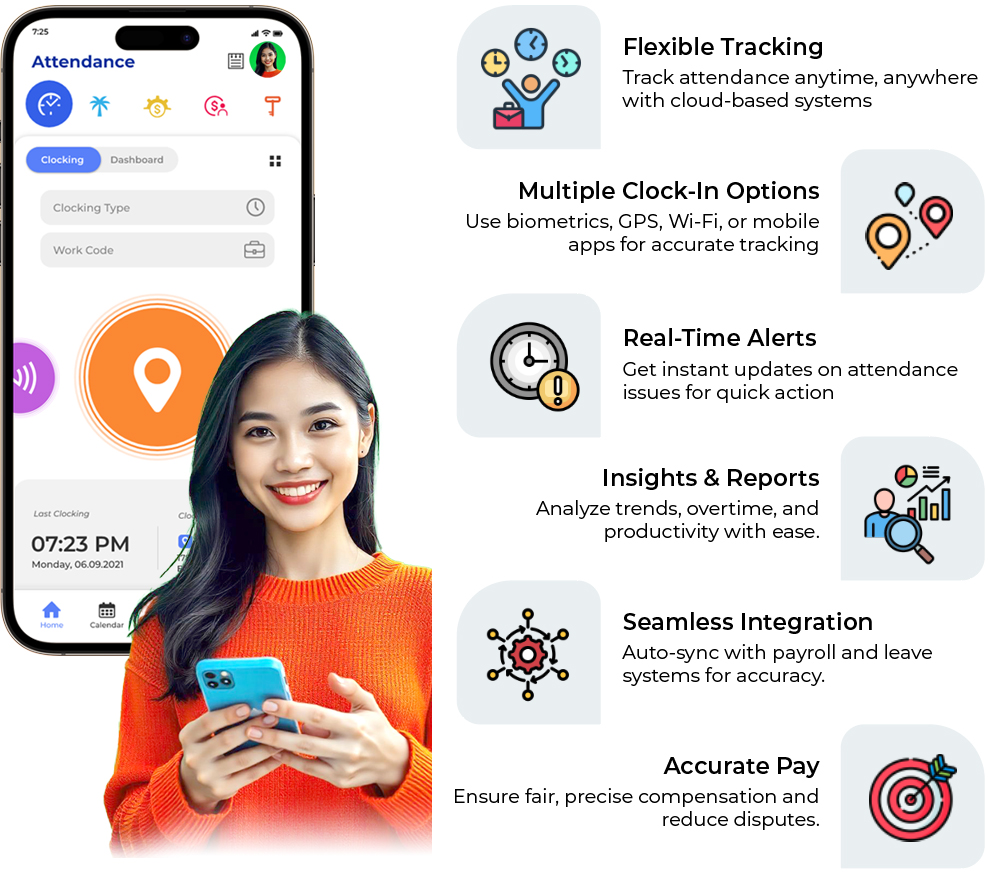
Attendance Tracking Flexibility
Cloud-based access transforms how organizations manage their time attendance systems, allowing managers and employees to track employee attendance from anywhere with internet connectivity. This flexibility enables real-time monitoring of workforce hours and instant access to attendance data. It makes it easier for businesses to maintain accurate records of employee time across multiple locations.
Different Clocking Options
Multi-mode clocking options revolutionize attendance tracking by offering various methods for employees to register their time. Options such as biometric authentication, GPS location verification, Wi-Fi-based check-ins and mobile apps, ensured accurate tracking of employee time attendance regardless of work environment. This versatility is particularly valuable for organizations with hybrid or remote workforce arrangements. As it can adapt to different working conditions while maintaining precise attendance records.
Real-time Notifications and Alerts
Real-time notifications and alerts serve as a proactive tool for managing employee attendance. Managers receive instant updates about late arrivals, early departures, or unusual patterns in employee time tracking. This immediate feedback loop helps organizations address attendance issues promptly, ensuring better workforce management and maintaining consistent employee productivity levels across teams.
Analytics and Reports
Advanced analytics and customizable reports provide deep insights into attendance tracking patterns. Organizations can generate detailed time attendance system reports that highlight trends in employee attendance, overtime hours, and productivity metrics. These analytics help identify areas for improvement in workforce management and enable data-driven decisions about staffing and scheduling.
Seamless Synchronization
Modern time attendance systems are designed to seamlessly synchronize with other modules such as payroll or leaves. This is to ensure all data is accurate, consistent, and error-free. By eliminating the need for manual data entry and minimizing discrepancies, this synchronization streamlines administrative processes and enhances operational efficiency. It ensures that workforce data flows smoothly across systems, enabling businesses to manage time and attendance effortlessly.
Accurate Payment
Accurate tracking of attendance and overtime ensures employees are fairly compensated for the hours they work. By maintaining precise and transparent records, the system eliminates disputes over tracked hours, fostering trust and boosting employee morale. This level of accuracy also contributes to improved productivity by offering clear visibility into work patterns, allowing organizations to optimize workforce scheduling and ensure operational fairness.
How Do I Choose the Attendance System That Suits Me Best?
Choosing the right time attendance system starts with understanding your organization’s needs. Consider the size of your workforce and whether you need features like remote clock-ins or GPS tracking.
Ensure the system is scalable to support future growth. Check if it integrates smoothly with your existing payroll and HR software. A user-friendly interface is also important to reduce training time for employees and managers.
Look for a provider that offers reliable support and regular updates. Lastly, choose a system that provides detailed reports and analytics to improve workforce management and decision-making.
Is It Time for an Upgrade?
This is a question that you might want to discuss with your upper level or your HR.
But the rule of thumb is you can evaluate yourself based on these criteria.
Are you struggling with:
- Accurate employee time tracking
- Lacks real-time attendance monitoring capabilities
- Fails to provide comprehensive workforce analytics
If all of your answers are yes, then you’ll need an upgrade to your system.
If you’re looking for a time attendance system, TimeTec can transform how you manage your employee attendance. We can provide accurate employee attendance tracking, streamline HR processes and even boost your overall employee productivity.
Don’t let your outdated attendance tracking methods keep your business from growing.
Are you ready to take the first step in revolutionizing your employee time attendance management?
Click the ‘Request Demo’ button below to discover how TimeTec can modernize your attendance tracking process.
Let us be your guiding light to optimize your workforce!
